Home> Company News> Hydraulic Setup Best Practices: Tips for Safe and Efficient Operation
- AddressNorth Tan Street, Jinan,Shandong
- Factory Address123 Ubi Ave 3 #12-30 Frontier Singapore 408867
- Worktime9:00-18:00(Beijing time)
- Phone(Working Time)86 0531-8299 9952
Hydraulic systems are used in a wide range of industries and applications, from manufacturing to construction and beyond. These systems rely on a complex network of components and fluids to function properly, and proper setup is essential for safe and efficient operation. The importance of proper hydraulic setup cannot be overstated, as inadequate setup can lead to system failure, accidents, and injuries.
A hydraulic system typically consists of a pump, a reservoir, a control valve, and various hydraulic cylinders or motors. These components work together to transfer fluid from the reservoir to the pump, where it is pressurized and sent to the control valve. The control valve regulates the flow of fluid to the cylinders or motors, causing them to move and perform work.
Proper hydraulic setup involves understanding the purpose and function of each component, selecting the right type and amount of fluid, and ensuring that all components are properly installed and connected. In this way, safe and efficient operation can be achieved, with minimal risk of system failure or other problems.
Hydraulic systems are an essential component of many industrial and commercial applications, providing the power needed to operate machinery and equipment. Understanding the components of a hydraulic system and their functions is crucial for safe and efficient operation.
The main components of a hydraulic system include a hydraulic pump, hydraulic fluid, hydraulic cylinder or motor, control valves, and hydraulic hoses. The hydraulic pump is responsible for generating the hydraulic pressure required to move hydraulic fluid through the system. Hydraulic fluid, which is typically a specially formulated oil, is used to transfer the hydraulic energy from the pump to the hydraulic cylinder or motor, which converts the hydraulic pressure into mechanical force or torque. Control valves are used to regulate the flow of hydraulic fluid and control the direction and speed of the hydraulic cylinder or motor. Finally, hydraulic hoses are used to transport the hydraulic fluid between the different components of the hydraulic system.
There are several types of hydraulic systems, including open-loop and closed-loop systems, and each system requires specific setup procedures. Open-loop systems typically use hydraulic pumps to generate pressure, which is then transmitted to the hydraulic cylinder or motor. In contrast, closed-loop systems use a hydraulic motor to drive the hydraulic pump, which provides more precise control over the hydraulic system's operation.
The hydraulic fluid used in hydraulic systems is also a crucial component, as it provides lubrication and cooling for the system's moving parts. Choosing the right type of hydraulic fluid and maintaining its quality is essential for safe and efficient hydraulic system operation. Hydraulic fluid should be changed regularly, and the system's filters should be cleaned or replaced to prevent contamination and ensure the fluid's quality.
Understanding the components of a hydraulic system and their functions is essential for safe and efficient operation. Proper hydraulic setup requires careful consideration of each component's specifications, the system's operating parameters, and the application's requirements. Regular maintenance and inspection are also essential for maintaining optimal hydraulic system performance and preventing system failure.
Techniques for Safe Hydraulic System Setup
Setting up a hydraulic system can be a complicated process that requires careful planning and execution. To ensure safe and efficient operation, it is important to follow a set of guidelines and procedures for proper hydraulic system setup. Here are some step-by-step instructions for safe hydraulic system setup:
-
Plan the system layout: Before starting the setup process, it is important to plan the system layout. This involves identifying the components required for the system and determining their locations. The layout should be designed to minimize pressure drops and ensure proper flow of hydraulic fluid.
-
Choose the correct hydraulic fluid: The type of hydraulic fluid used in the system can greatly impact its performance. It is important to choose the correct hydraulic fluid based on the system requirements and manufacturer's recommendations. Using the wrong type of fluid can cause damage to the system components and result in poor performance.
-
Clean the system components: Before assembling the hydraulic system, it is important to clean all components thoroughly. This includes hoses, fittings, valves, and cylinders. Dirt and debris can cause damage to the components and impact system performance.
-
Assemble the components: Once the components are clean, they can be assembled according to the system layout plan. It is important to ensure that all components are installed in the correct orientation and tightened to the manufacturer's specifications. This helps prevent leaks and ensures proper operation.
-
Fill the system with hydraulic fluid: After the components are assembled, the hydraulic system can be filled with the correct hydraulic fluid. It is important to ensure that the fluid level is correct and that there are no air bubbles in the system. Air bubbles can cause cavitation and damage to the system components.
-
Perform a system check: Once the system is filled with hydraulic fluid, it is important to perform a system check. This involves checking for leaks, ensuring proper fluid flow, and verifying that all system components are functioning properly. Any issues should be addressed before the system is put into operation.
-
Train personnel: It is important to train personnel on proper hydraulic system operation and maintenance. This includes proper shutdown procedures, regular maintenance tasks, and troubleshooting common issues. Proper training can help prevent accidents and injuries and ensure the safe and efficient operation of the hydraulic system.
By following these step-by-step instructions, you can ensure safe and efficient hydraulic system setup. It is important to always follow manufacturer's recommendations and guidelines for hydraulic system setup and maintenance to ensure proper operation and prevent accidents and injuries.
Common Issues with Hydraulic System Setup
Proper hydraulic system setup is crucial for ensuring optimal system performance, efficiency, and safety. However, even with the best setup practices, issues can still arise in hydraulic systems. Understanding common hydraulic system setup issues is essential for diagnosing and resolving problems before they cause significant damage.
One common issue with hydraulic system setup is leaks. Leaks can occur for several reasons, such as loose fittings, damaged seals or gaskets, or worn-out components. Leaks can result in a loss of hydraulic fluid, reduced system pressure, and compromised system performance. It is essential to identify and repair leaks promptly to prevent further damage and ensure proper system operation.
Another common issue with hydraulic system setup is incorrect fluid levels. Low fluid levels can cause air to enter the system, which can lead to cavitation, reduced system performance, and potential damage to system components. On the other hand, overfilled fluid levels can cause excessive pressure in the system, resulting in leaks, blown seals or gaskets, and other system failures.
Inadequate filtration is another issue that can affect hydraulic system setup. Proper filtration is essential for maintaining clean hydraulic fluid, which is necessary for optimal system performance and longevity. Poor filtration can lead to contaminated hydraulic fluid, resulting in increased wear and tear on system components and reduced system efficiency.
Incorrect system pressure is also a common issue with hydraulic system setup. System pressure that is too low can result in reduced system performance, while system pressure that is too high can cause system failure, blown seals or gaskets, and other issues. It is essential to ensure that hydraulic systems are set up to maintain proper pressure levels for optimal system performance and longevity.
By understanding common issues with hydraulic system setup, operators can diagnose and resolve problems before they cause significant damage to the system. Regular inspections and maintenance can also help prevent these issues from occurring in the first place, ensuring safe and efficient hydraulic system operation.
Best Practices for Hydraulic System Maintenance
Proper maintenance is crucial for ensuring the safe and efficient operation of hydraulic systems. Regular maintenance helps to prevent issues such as leaks, component failure, and system breakdowns. In this section, we will discuss the best practices for hydraulic system maintenance.
Recommended Maintenance Schedule It is recommended to follow the manufacturer's maintenance schedule for hydraulic system maintenance. This includes regular inspection and cleaning of system components, as well as replacing filters and fluids at the recommended intervals.
Inspection and Cleaning Regular inspection and cleaning of hydraulic system components is essential for maintaining system performance. Dirt and debris can clog filters and cause system issues, while corrosion can damage components and cause leaks.
During the inspection process, all components should be checked for signs of wear or damage. Any worn or damaged components should be replaced immediately. In addition, all system connections should be checked for leaks.
Cleaning should be performed using a non-residue cleaner, such as hydraulic fluid. Avoid using solvents or other chemicals that can damage system components.
Fluid and Filters Using the proper fluid and filters is crucial for maintaining the performance and longevity of hydraulic systems. Using the wrong fluid or filter can cause issues such as component failure and system breakdowns.
It is important to use the recommended hydraulic fluid for the specific system, as specified by the manufacturer. In addition, filters should be replaced at the recommended intervals to prevent clogs and system issues.
Anytime the hydraulic fluid is replaced, the system should be thoroughly cleaned before new fluid is added. This will prevent any contaminants from entering the system.
Conclusion Proper hydraulic system maintenance is crucial for ensuring the safe and efficient operation of hydraulic systems. Regular inspection and cleaning, as well as using the proper fluid and filters, will help to prevent issues and prolong the life of the system. It is important to follow the manufacturer's recommended maintenance schedule and guidelines for best results.
Safety Considerations
Hydraulic systems can be incredibly powerful and dangerous if not set up and operated safely. That's why it's critical to consider safety when setting up hydraulic systems. Here are some important safety considerations to keep in mind:
-
Personal Protective Equipment (PPE): When working with hydraulic systems, it's essential to wear the proper PPE. This typically includes safety glasses, gloves, and steel-toed boots. Workers should also avoid loose-fitting clothing and tie back long hair to prevent it from getting caught in the system.
-
Proper Training: Before working with hydraulic systems, workers should receive proper training on setup, operation, and safety. This includes knowledge of safe working practices, proper use of tools and equipment, and emergency procedures.
-
System Inspection: Hydraulic systems should be inspected regularly to ensure that all components are working correctly and there are no signs of damage or leaks. Any issues should be addressed immediately to prevent accidents.
-
System Shutdown: Before performing any maintenance or repairs on a hydraulic system, the system should be shut down and isolated to prevent unintentional movement or release of hydraulic pressure.
-
Lockout/Tagout: When performing maintenance or repairs on a hydraulic system, a lockout/tagout procedure should be followed to prevent the accidental start-up of the system.
-
Pressure Release: Before disconnecting any hydraulic lines, it's essential to release the pressure in the system to prevent unintentional movement of the hydraulic components.
-
Proper Fluid Handling: When adding or changing hydraulic fluid, it's essential to follow proper handling procedures to prevent spills or contamination of the fluid. Workers should also dispose of used fluid properly.
By following these safety considerations and guidelines, workers can reduce the risk of accidents and injuries when setting up and operating hydraulic systems.
It's also essential to remember that accidents can and do happen, even when taking proper safety precautions. That's why it's critical to have an emergency response plan in place and to know how to respond in case of an accident or injury. Workers should also receive proper first aid training and know the location of first aid kits and emergency equipment.
Frequently Asked Questions
As with any complex system, hydraulic systems can raise a lot of questions for users. Here are some of the most commonly asked questions about hydraulic system setup:
- What is the recommended hydraulic fluid for my system?
The recommended hydraulic fluid will vary depending on the specific system and its components. Refer to the manufacturer's instructions and recommendations for the appropriate fluid to use.
- How often should I inspect and maintain my hydraulic system?
Regular inspection and maintenance are critical to the safe and efficient operation of hydraulic systems. It is recommended to inspect and maintain your system at least once every six months, or more frequently if it is in continuous use.
- How can I tell if my hydraulic system is experiencing issues?
Common signs of hydraulic system issues include slow or erratic operation, excessive noise or vibration, and leaks. If you notice any of these issues, it's important to address them promptly to avoid more serious problems.
- How do I troubleshoot hydraulic system problems?
To troubleshoot hydraulic system problems, start by identifying the specific issue and consulting the system's manual for guidance. If you are unable to resolve the issue on your own, seek the assistance of a trained professional.
- How can I improve the performance of my hydraulic system?
Proper setup and maintenance are critical for achieving optimal hydraulic system performance. Follow the manufacturer's instructions and recommendations, and consult with a professional if you have any questions or concerns.
- How can I ensure the safety of myself and others when operating hydraulic systems?
Safety is of utmost importance when working with hydraulic systems. Always follow proper safety procedures, such as wearing appropriate personal protective equipment and locking out equipment during maintenance or repair. Familiarize yourself with the system's manual and seek the assistance of a trained professional when needed.
By understanding the common questions and concerns associated with hydraulic system setup, users can take proactive steps to ensure the safe and efficient operation of their systems. If you have any additional questions or concerns, consult with a trained professional or refer to the manufacturer's instructions and recommendations.
Conclusion
Hydraulic systems are an essential component of modern machinery and equipment. However, without proper setup and maintenance, these systems can be prone to malfunction, resulting in inefficiency, downtime, and even accidents.
In this guide, we've discussed the importance of proper hydraulic setup, the components of hydraulic systems, and the techniques for safe system setup. We've also covered common issues that arise with hydraulic system setup, best practices for system maintenance, and safety considerations for hydraulic setup and operation.
It's important to remember that hydraulic systems can be dangerous if not handled correctly. Proper training, safety procedures, and maintenance are essential for the safe and efficient operation of hydraulic systems. By following the recommendations in this guide and consulting the manufacturer's instructions and guidelines, you can ensure that your hydraulic system is operating at optimal performance.
Regular maintenance and inspection of hydraulic system components can also prevent costly repairs and downtime, improving productivity and efficiency. By using the correct fluid and filters, you can help to extend the life of your hydraulic system and prevent damage caused by contaminated fluids.
In conclusion, safe and efficient hydraulic setup is crucial for the proper functioning of hydraulic systems. By following the tips and best practices outlined in this guide, you can ensure that your hydraulic system operates at its best performance, reducing downtime, and improving productivity. Always prioritize safety and proper maintenance to avoid accidents and costly repairs.


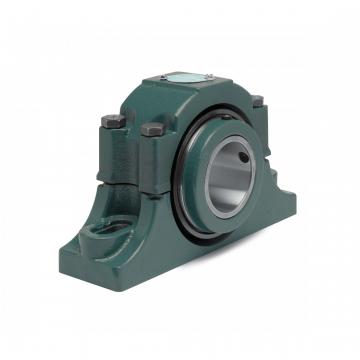 Mounted Tapered Roller Bearings P4B-EXL-212RE
Mounted Tapered Roller Bearings P4B-EXL-212RE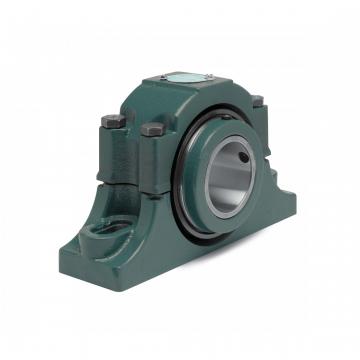 Mounted Tapered Roller Bearings P4B-EXL-400R
Mounted Tapered Roller Bearings P4B-EXL-400R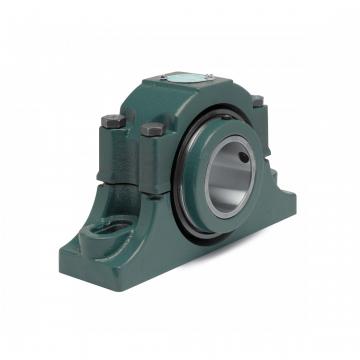 Mounted Tapered Roller Bearings P4B-EXL-400RE
Mounted Tapered Roller Bearings P4B-EXL-400RE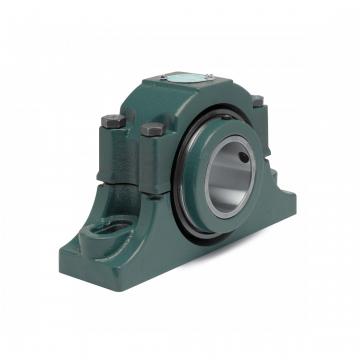 Mounted Tapered Roller Bearings P4B-EXL-315RE
Mounted Tapered Roller Bearings P4B-EXL-315RE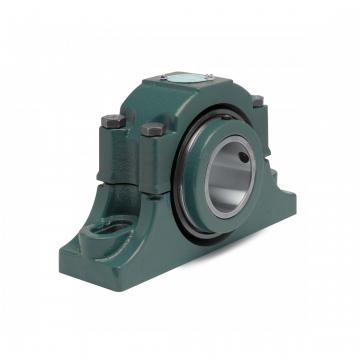 Mounted Tapered Roller Bearings P4B-EXL-207RE
Mounted Tapered Roller Bearings P4B-EXL-207RE